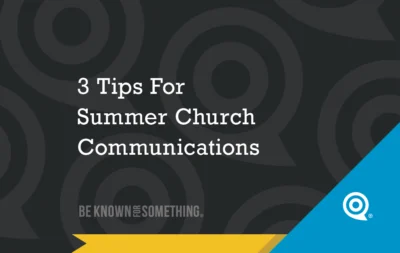
Yikes, People are Listening Differently (3 ways)
I remember years ago, on a summer vacation, my parents stopped near a lake to take a break from driving

Church communication has a rhythm. It’s a regular, reliable pace and pattern of required content. But it may be time to establish a new rhythm. Stop wasting time on church communication that is out of step with what the audience wants.
In music, someone needs to establish a consistent rhythm so the instruments and vocalists work together. If that rhythm isn’t correct or the beat isn’t heard, the ensemble fails. Your communication is the same.
Here are 5 ways to assess your current rhythm with suggestions for establishing next steps toward a new rhythm that’s effective for your local church:


I remember years ago, on a summer vacation, my parents stopped near a lake to take a break from driving

Everyone likes to be found: that’s why Church SEO is important. Especially being found on Google (or Yahoo, Bing, etc.)

When I’ve taught Sunday School classes, I’m always amazed how attendance fluctuated very little each week yet we had different
Discover your thread®. Be Known for Something® relevant and needed. Pastor, control your church brand and be heard again.
– Discover Your Audience
– Build Your Brand
– Communicate & Be Heard
Communicate so your congregation & community pays attention to your website, social media, & email!
We'll never spam you. Unsubscribe anytime.
